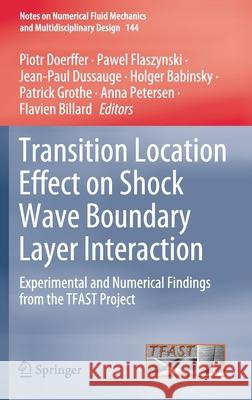Transition Location Effect on Shock Wave Boundary Layer Interaction: Experimental and Numerical Findings from the Tfast Project » książka
topmenu
Transition Location Effect on Shock Wave Boundary Layer Interaction: Experimental and Numerical Findings from the Tfast Project
ISBN-13: 9783030474607 / Angielski / Twarda / 2020 / 540 str.
Transition Location Effect on Shock Wave Boundary Layer Interaction: Experimental and Numerical Findings from the Tfast Project
ISBN-13: 9783030474607 / Angielski / Twarda / 2020 / 540 str.
cena 602,40
(netto: 573,71 VAT: 5%)
Najniższa cena z 30 dni: 578,30
(netto: 573,71 VAT: 5%)
Najniższa cena z 30 dni: 578,30
Termin realizacji zamówienia:
ok. 22 dni roboczych.
ok. 22 dni roboczych.
Darmowa dostawa!
Kategorie:
Kategorie BISAC:
Wydawca:
Springer
Seria wydawnicza:
Język:
Angielski
ISBN-13:
9783030474607
Rok wydania:
2020
Wydanie:
2021
Numer serii:
000388779
Ilość stron:
540
Waga:
0.93 kg
Wymiary:
23.39 x 15.6 x 3.02
Oprawa:
Twarda
Wolumenów:
01
Dodatkowe informacje:
Wydanie ilustrowane











